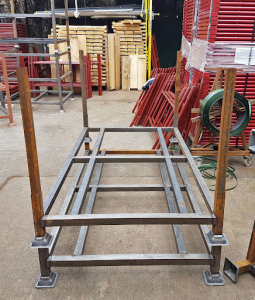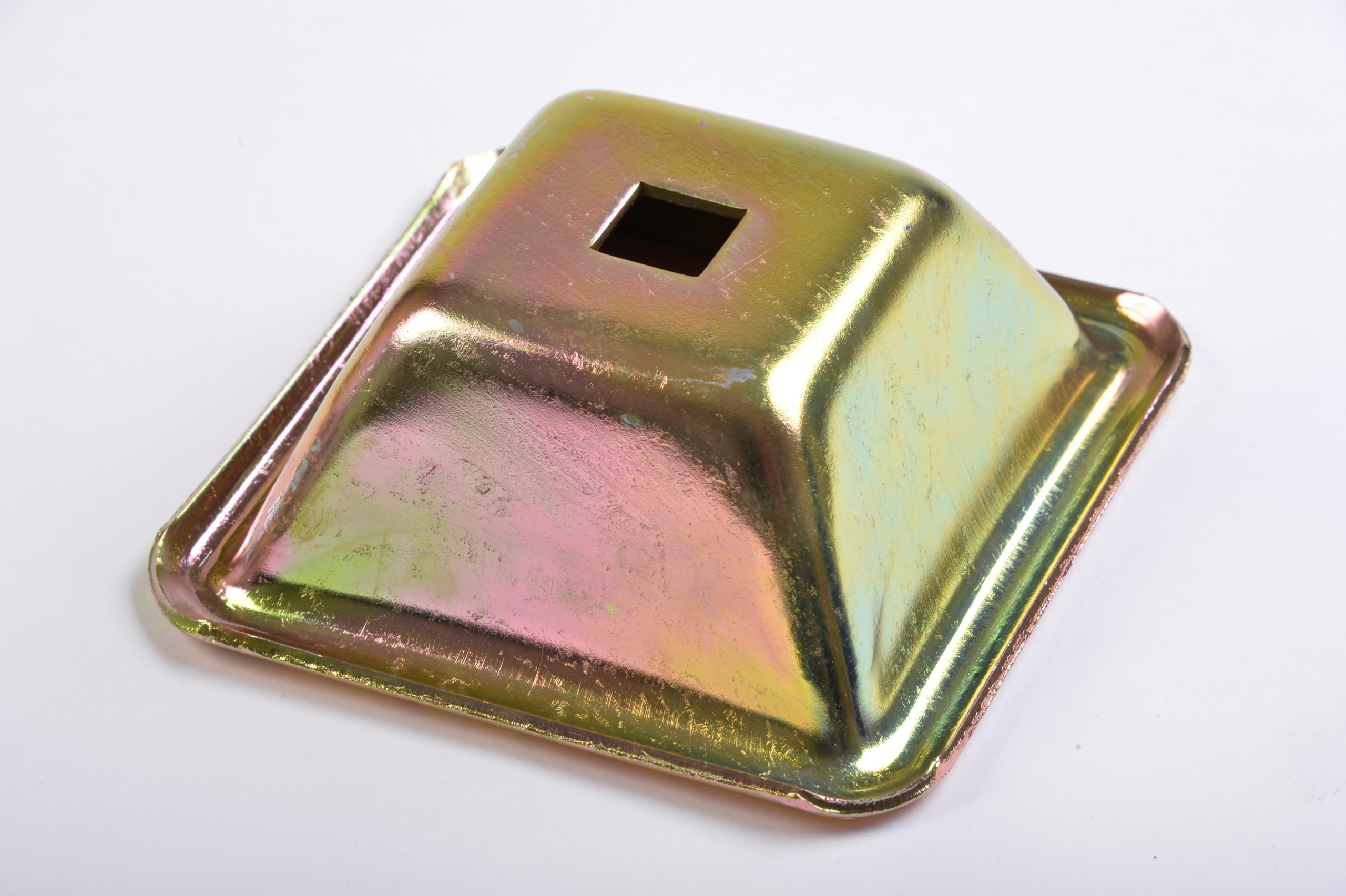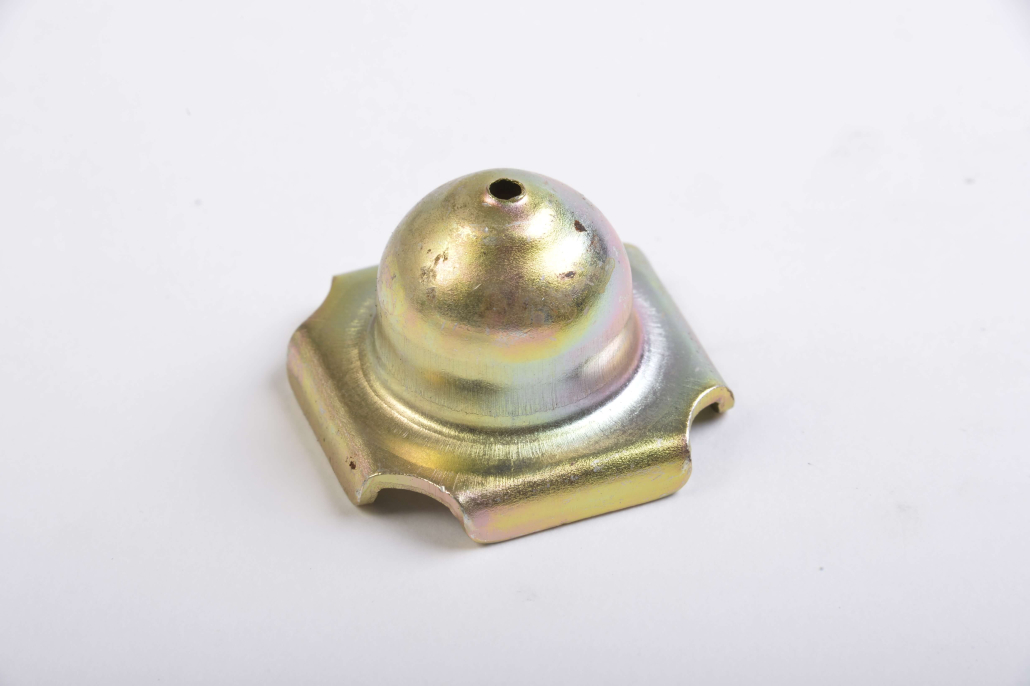Pallet Feet or Nesting Plugs? How to Pick the Perfect Fit for Your Stillages
Every warehouse depends on sturdy, reliable fittings to keep goods safe and organised. Two of the most important yet often overlooked components are pallet feet and nesting plugs. Both play a vital role in how your stillages perform, especially when it comes to stacking, stability, and safe handling.
While they look similar and sometimes work together, their functions differ significantly. Choosing the right one can improve efficiency, reduce damage, and extend the lifespan of your storage equipment. Let’s explore how to decide between pallet feet and nesting plugs for your stillages.
Understanding the Role of Pallet Feet in Stillage Systems
Pallet feet are the foundation of most stillages and industrial pallets. They are welded or fixed beneath the frame to provide elevation, strength, and balance. These steel fittings lift the stillage off the ground, prevent direct contact with the floor, and allow forklifts or pallet jacks to move them easily.
Key Features of Pallet Feet
| Feature | Description | Benefit |
| Purpose | Fixed under stillage base | Provides elevation and balance |
| Material | Mild or stainless steel | Strong, durable, corrosion-resistant |
| Main Function | Supports weight and ground clearance | Prevents damage, improves mobility |
| Shape Options | Square, round, two-sided | Fits different stillage frames |
| Best For | Heavy, ground-level stillages | Stability and forklift access |
For the best-case scenario, check out the guide regarding Fixed, Adjustable & Stackable Steel Pallet Feet – Which Type for Your Warehouse?
When you need a durable base that handles tough conditions, steel pallet feet are the right choice. For reliable, UK-made pallet feet that deliver long-term stability, explore the Kirmell KPF3 Square Steel Pallet Foot. It’s built from mild steel and engineered to meet ISO 9002 / EN 29002 standards, ideal for everyday warehouse and logistics applications where strength and consistency matter.
Understanding the Role of Nesting Plugs in Stacking Systems
Nesting plugs serve a different purpose: they are used on top of stillages to allow vertical stacking. These small recessed fittings hold the pallet feet of the stillage above, locking them securely in place.
This design prevents the upper stillage from slipping or shifting during movement, improving overall safety and space efficiency.
| Feature | Description | Benefit |
| Purpose | Fits on top of stillages | Allows safe vertical stacking |
| Design | Recessed cup-shaped | Holds pallet feet above securely |
| Material | Pressed mild or stainless steel | Strong, rust-resistant |
| Best For | Multi-tier storage systems | Saves floor space |
| Function | Locks stillages in place | Prevents shifting during movement |
If you’re upgrading your stacking system, consider the Kirmell KPF55 Steel Nesting Plug. Its precision-pressed steel design ensures a snug, secure fit for safe vertical stacking a dependable choice for warehouses handling medium to heavy loads.
Also read How Nesting Plugs Reduce Damage During Storage and Transport.
Pallet Feet vs Nesting Plugs — Quick Comparison
| Feature | Pallet Feet | Nesting Plug |
| Placement | Under the stillage | On top of the stillage |
| Main Function | Provides base stability | Enables safe stacking |
| Ideal Use | Heavy loads on the ground | Vertical stacking systems |
| Mobility | Easier forklift access | Not designed for movement |
| Best For | Manufacturing & metal parts storage | Distribution & space-saving |

Combining Pallet Feet and Nesting Plugs for Maximum Stability
In many modern warehouses, pallet feet and nesting plugs are used together. The feet provide a sturdy base, while the plugs on top ensure the next layer aligns perfectly.
This combination creates a balanced stacking system strong at the base, stable at the top.
It also prevents uneven pressure points, reduces tilting risk, and allows forklifts to move stacked stillages safely.
Example setup:
A warehouse storing automotive frames might use square pallet feet for ground stability and half-moon nesting plugs for interlocking precision. The result is a smooth, secure stacking process that saves time and space.
Choosing Between Pallet Feet and Nesting Plugs
To pick the right fit for your stillages, consider these key factors:
Type of Load
- Use pallet feet for heavy machinery, bulk materials, or goods stored on the ground.
- Use nesting plugs for lighter loads that are stacked vertically.
Warehouse Layout
- Pallet feet are perfect for wide, open warehouses where equipment moves frequently.
- Nesting plugs are ideal for tight storage areas or vertical systems.
Handling Method
- If forklifts and pallet trucks are used daily, pallet feet provide essential clearance.
- For warehouses where goods are stacked and left undisturbed, nesting plugs enhance safety.
Replacement and Maintenance
Both components experience wear over time, pallet feet from ground contact, and nesting plugs from repeated stacking. Regular inspection and timely replacement ensure safety and prevent accidents.

Maintenance Tips for Long-Term Use
Keeping your fittings in excellent condition is key to ensuring your stillages remain safe, stable, and durable. Regular maintenance not only extends the lifespan of your components but also helps prevent accidents, load imbalance, and costly downtime caused by equipment failure. Even small defects in pallet feet or nesting plugs can lead to instability when stacks are loaded, so consistent checks are essential for maintaining warehouse efficiency.
For Pallet Feet:
- Inspect for dents, cracks, or corrosion: Pay close attention to the edges and welded joints. Even minor damage can affect balance when the stillage is loaded.
- Re-weld or replace damaged feet promptly: If any foot becomes loose or bent, repair it before it compromises load stability.
- Avoid dragging stillages across rough floors: Lifting with a forklift or pallet jack prevents abrasion and deformation.
- Lubricate or clean occasionally: Removing rust or dirt buildup keeps the surface smooth and easy to handle.
For Nesting Plugs:
- Check that plugs are flush with the frame and not deformed: A distorted or sunken plug can cause stacked stillages to lean or misalign.
- Clean out debris to maintain a snug fit: Dust and small particles can interfere with the connection between plugs and feet, reducing stability.
- Replace rusted or worn plugs immediately to prevent misalignment: Over time, rust weakens the metal and causes loose fits that increase the risk of slipping.
- Apply protective coating if needed: In humid or outdoor environments, a corrosion-resistant coating can help maintain performance and extend service life.
Finally, create a routine inspection schedule ideally once a month for heavy-use areas and quarterly for general storage zones. Record any issues and address them early before they escalate. A well-maintained system not only improves safety but also saves time and money by reducing repairs and replacements.
Cost and Efficiency Considerations
While both components are affordable, quality determines value. Low-grade steel fittings may seem cheaper upfront, but they wear out faster and cause instability. Choosing high-quality, precisely pressed steel components ensures a consistent fit and long-term savings.
Well-made fittings reduce replacement frequency, maintain stack precision, and prevent costly downtime due to damaged goods or unsafe handling.
Buy Reliable Pallet Feet and Nesting Plugs from Kirmell
When it comes to warehouse fittings, choosing trusted, British-made components makes all the difference. At Kirmell Ltd, we’ve been manufacturing steel pallet feet and nesting plugs since 1985 providing durable, precision-engineered solutions for warehouses, logistics hubs, and industrial storage systems. Our products are designed to deliver consistent performance, accurate fitting, and long-term reliability under heavy loads. Whether you need square or round pallet feet, standard or heavy-duty nesting plugs, or custom-made fittings, Kirmell offers quality you can count on.
All our products are made to ISO 9002 / EN 29002 standards, ensuring strength, safety, and compatibility with most stillage and pallet systems. Browse our full range of pallet feet and nesting plugs, or contact our team for guidance on selecting the perfect fit for your warehouse.
Conclusion
Both pallet feet and nesting plugs play a crucial role in maintaining safe, stable, and efficient warehouse operations. Choosing the right fittings and keeping them well-maintained ensures your stillages remain reliable under daily industrial demands.
Regular inspections, timely replacements, and proper handling go a long way in preventing costly downtime and equipment damage. By investing in quality steel fittings and caring for them properly, you create a safer working environment, extend the lifespan of your storage systems, and improve overall warehouse productivity.
FAQs
How often should pallet feet and nesting plugs be inspected?
What happens if worn nesting plugs aren’t replaced?
Where can I buy pallet feet and nesting plugs in the UK?




